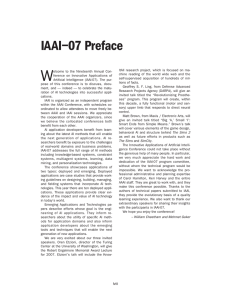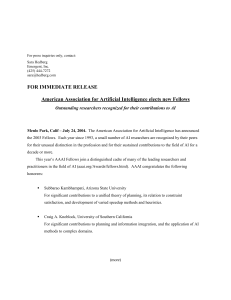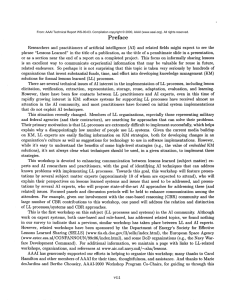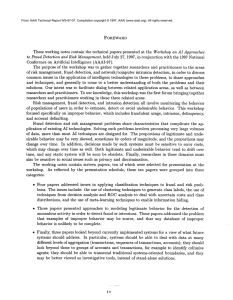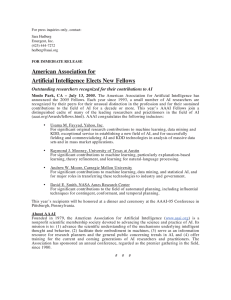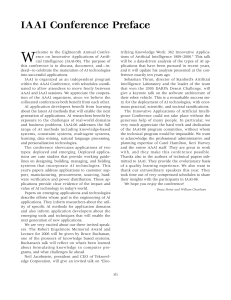Knowledge Engineer
advertisement
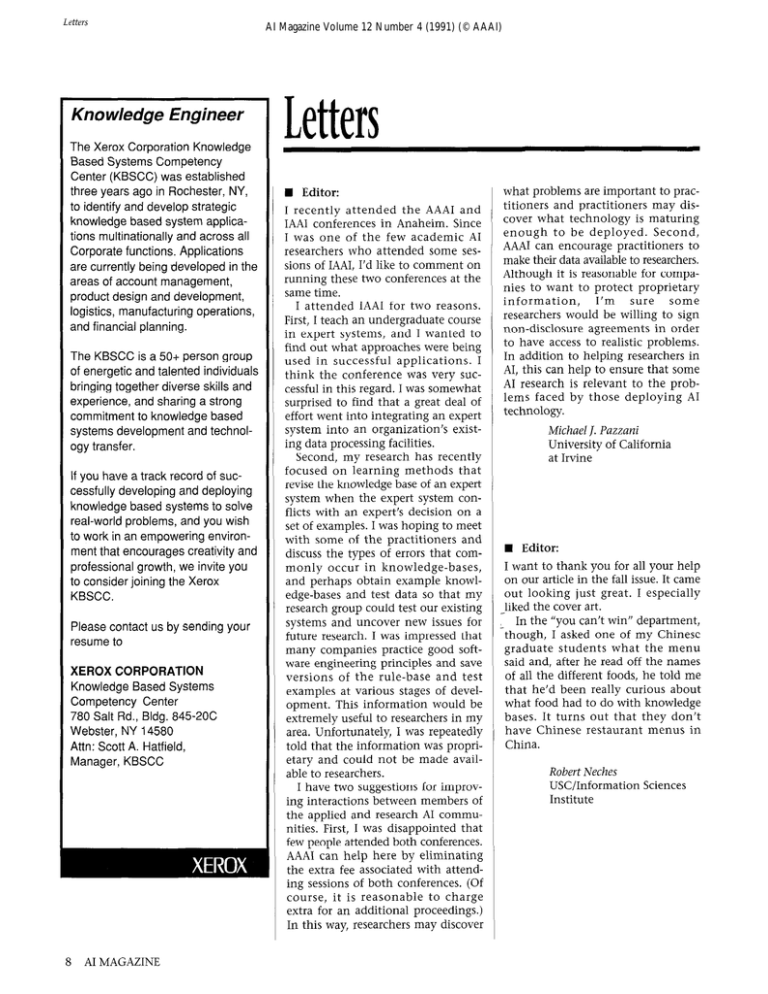
AI Magazine Volume 12 Number 4 (1991) (© AAAI) Knowledge Engineer The Xerox Corporation Knowledge Based Systems Competency Center (KBSCC) was established three years ago in Rochester, NY, to identify and develop strategic knowledge based system applications multinationally and across all Corporate functions. Applications are currently being developed in the areas of account management, product design and development, logistics, manufacturing operations, and financial planning. The KBSCC is a 50+ person group of energetic and talented individuals bringing together diverse skills and experience, and sharing a strong commitment to knowledge based systems development and technology transfer. If you have a track record of successfully developing and deploying knowledge based systems to solve real-world problems, and you wish to work in an empowering environment that encourages creativity and professional growth, we invite you to consider joining the Xerox KBSCC. Please contact us by sending your resume to XEROX CORPORATION Knowledge Based Systems Competency Center 780 Salt Rd., Bldg. 84520C Webster, NY 14580 Attn: Scott A. Hatfield, Manager, KBSCC 8 AI MAGAZINE Letters W Editor: I recently attended the AAAI and IAAI conferences in Anaheim. Since I was one of the few academic AI researchers who attended some sessions of IAAI, I’d like to comment on running these two conferences at the same time. I attended IAAI for two reasons. First, I teach an undergraduate course in expert systems, and I wanted to find out what approaches were being used in successful applications. I think the conference was very successful in this regard. I was somewhat surprised to find that a great deal of effort went into integrating an expert system into an organization’s existing data processing facilities. Second, my research has recently focused on learning methods that revise the knowledge base of an expert system when the expert system conflicts with an expert’s decision on a set of examples. I was hoping to meet with some of the practitioners and discuss the types of errors that commonly occur in knowledge-bases, and perhaps obtain example knowledge-bases and test data so that my research group could test our existing systems and uncover new issues for future research. I was impressed that many companies practice good software engineering principles and save versions of the rule-base and test examples at various stages of development. This information would be extremely useful to researchers in my area. Unfortunately, I was repeatedly told that the information was proprietary and could not be made available to researchers. I have two suggestions for improving interactions between members of the applied and research AI communities. First, I was disappointed that few people attended both conferences. AAAI can help here by eliminating the extra fee associated with attending sessions of both conferences. (Of course, it is reasonable to charge extra for an additional proceedings.) In this way, researchers may discover what problems are important to practitioners and practitioners may discover what technology is maturing enough to be deployed. Second, AAAI can encourage practitioners to make their data available to researchers. Although it is reasonable for companies to want to protect proprietary information, I’m sure some researchers would be willing to sign non-disclosure agreements in order to have access to realistic problems. In addition to helping researchers in AI, this can help to ensure that some AI research is relevant to the problems faced by those deploying AI technology. Michael J. Pazzani University of California at Irvine W Editor: I want to thank you for all your help on our article in the fall issue. It came out looking just great. I especially -liked the cover art. In the “you can’t win” department, -though, I asked one of my Chinese graduate students what the menu said and, after he read off the names of all the different foods, he told me that he’d been really curious about what food had to do with knowledge bases. It turns out that they don’t have Chinese restaurant menus in China. Robert Neches USC/Information Institute Sciences
